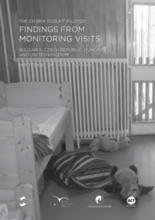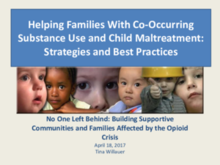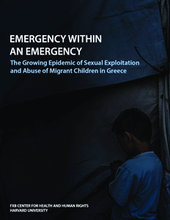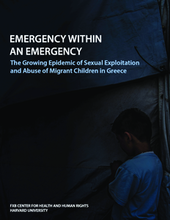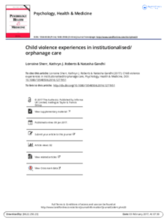Displaying 661 - 670 of 1087
This country care review includes the care-related Concluding Observations adopted by the Committee on the Rights of Persons with Disabilities during the seventeenth session (20 March 2017 - 12 April 2017) of the Convention on the Rights of Persons with Disabilities.
This report is one of several outputs arising from the project “Identifying and Preventing Abuse of Children with Mental Disabilities in Institutions.” The report presents findings from the monitoring of European institutions where children with intellectual disabilities and children with psychosocial disabilities live on a permanent or semi-permanent basis, through the development of tools and guidance aligned with international human rights law and policy.
This briefing highlights how prohibition of all corporal punishment of children in Africa is an essential step towards fulfilling the 2030 Agenda for Sustainable Development - particularly target 16.2 to end all violence against children, and targets related to health, well-being and quality education - and Africa’s Agenda for Children 2040: Fostering an Africa Fit for Children.
This report starts to collate evidence on what appears to be important to children who have experienced sexual exploitation.
This paper reviews evidence and develops a framework to understand linkages between non-contributory social safety nets (SSNs) and the experience of childhood emotional, physical and sexual violence in low- and middle-income countries.
This presentation features:
The present study analyzes the risk factors responsible for the exposure of migrant and refugee children to physical, psychological, and sexual violence and exploitation in Greece in the context of the ongoing migrant humanitarian crisis. It documents sexual and physical abuse of children inside migrant camps and reports new information about the commercial sexual exploitation of migrant children in the main cities of Greece. This research also explores the existing gaps and challenges in intervention efforts that contribute to victimization of migrant children.
The present study analyzes the risk factors responsible for the exposure of migrant and refugee children to physical, psychological, and sexual violence and exploitation in Greece in the context of the ongoing migrant humanitarian crisis.
This cross-sectional descriptive study found that poverty is the main reason children stay and work on the street.
This systematic review addresses violence and abuse experiences in institutionalised care, including frequency and type of abuse/violence, interventions addressing violence in institutional care, the perpetrators of violence, and the connections between abuse and cognitive delays in institutionalised children.


